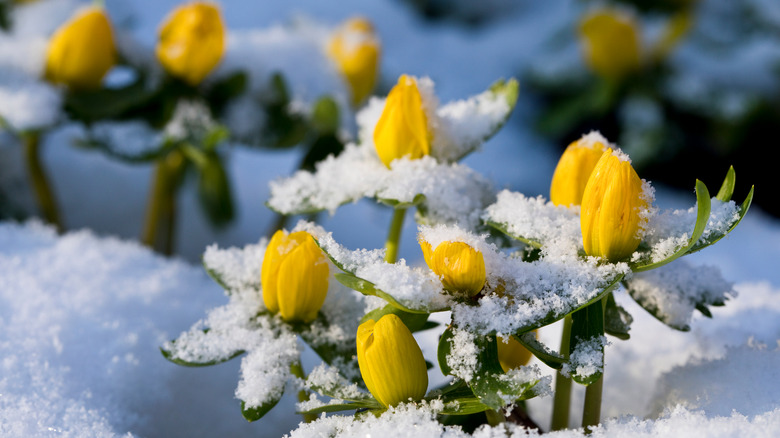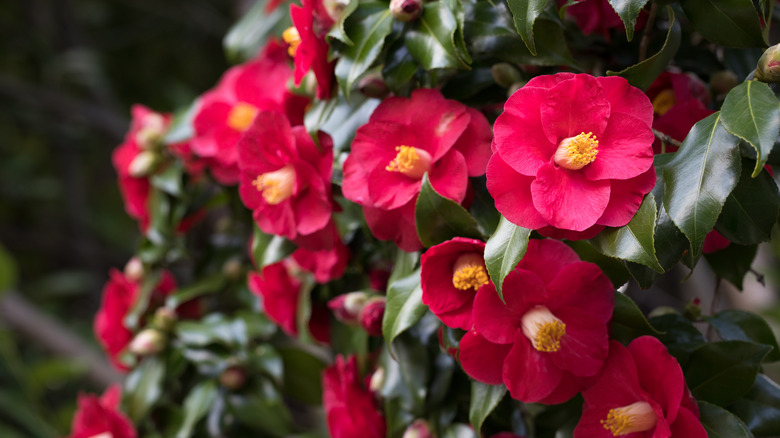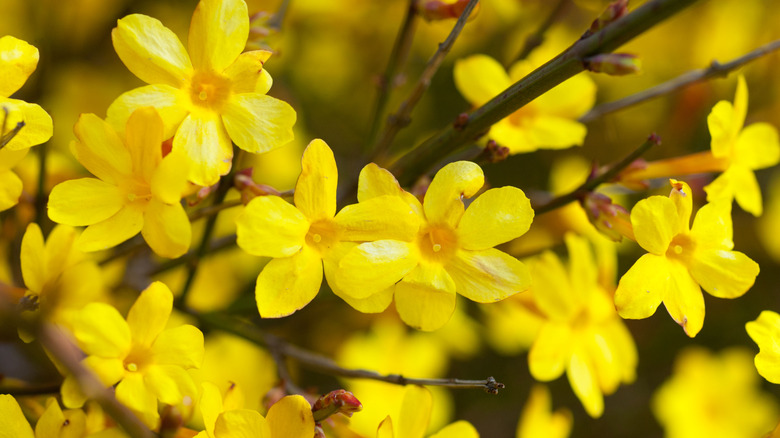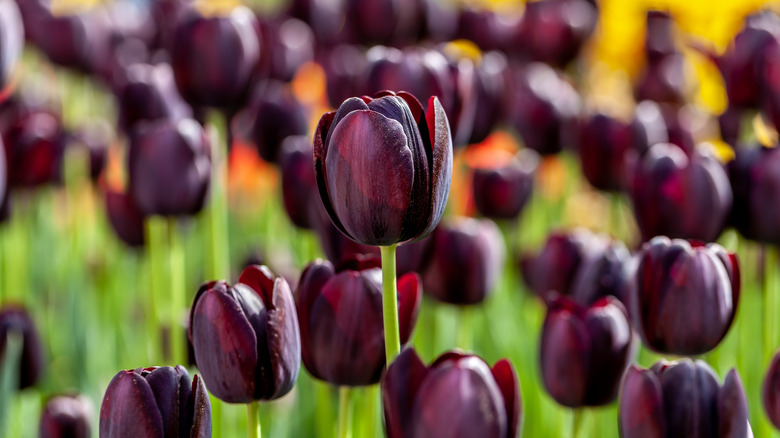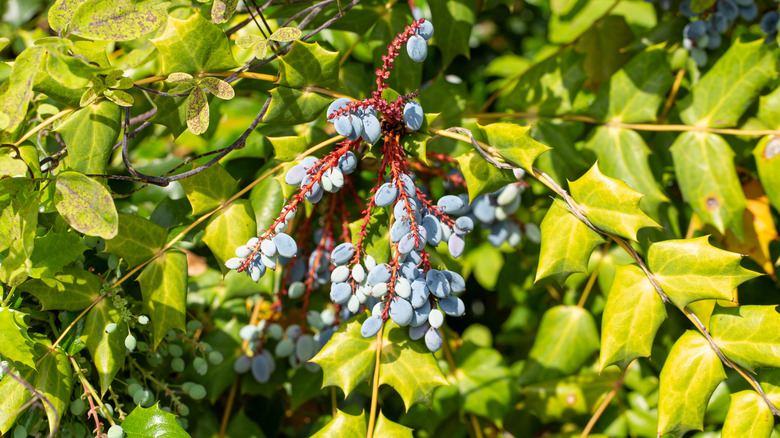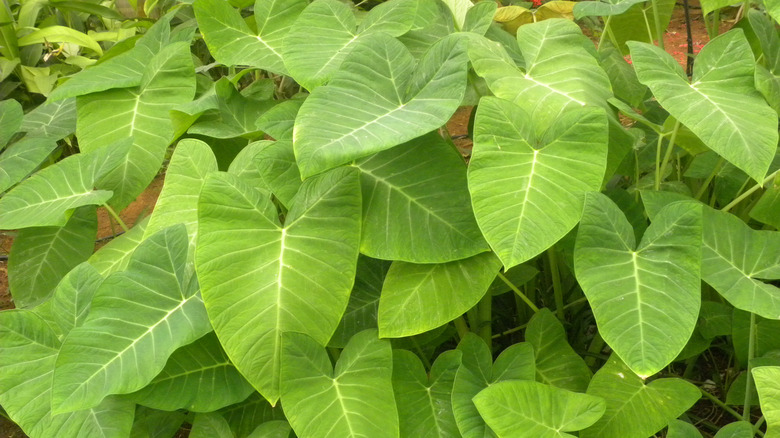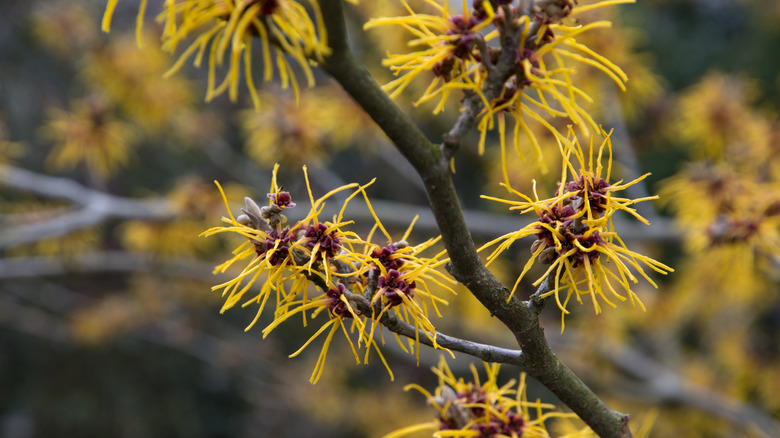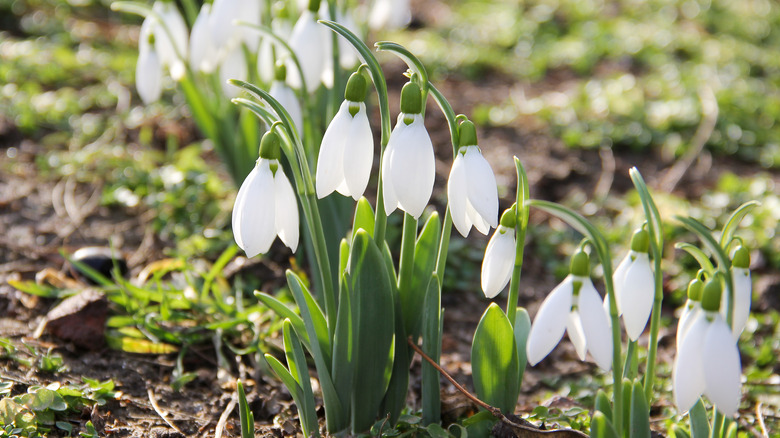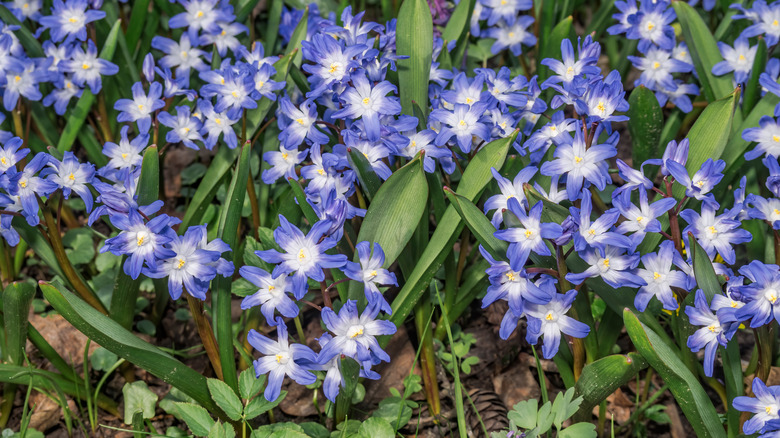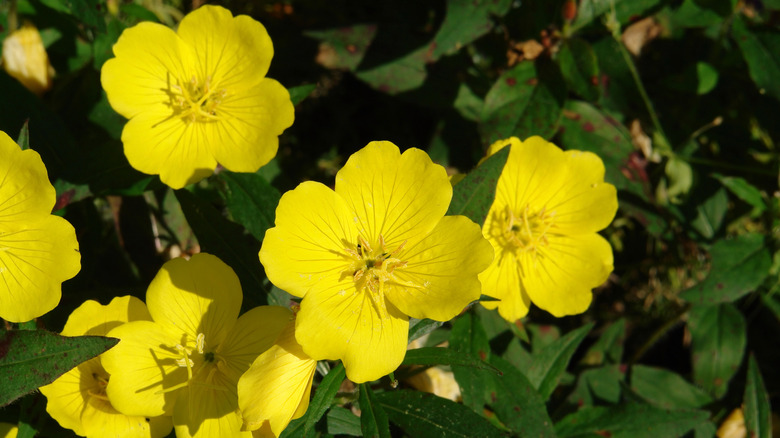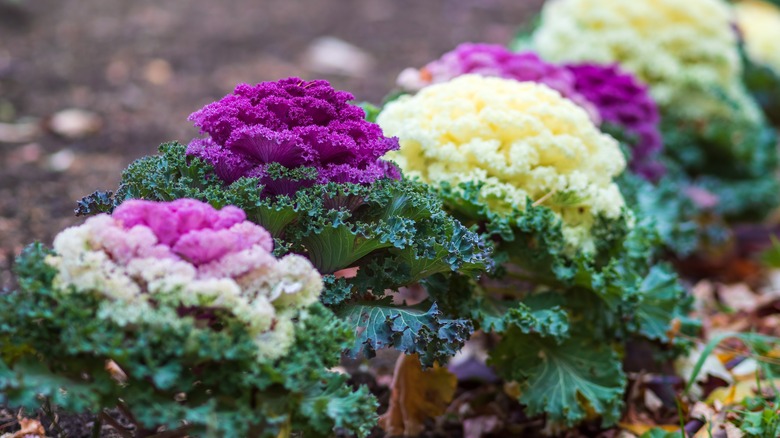10 Plants That Will Bring Color To Your Yard During Drab Winters
Winter's only one season away, which might be too early for people to think about now, but it's the perfect time to start growing some plants that will bloom gorgeously during the cold season. It might be hard to believe that you can grow plants in winter because of the weather, but in reality, with the different hardiness zones, you'll be able to find a few that are perfect for your wintertime garden. If you start planting your seeds in the late fall, then you'll be able to see your plants bloom during winter, according to Eartheasy.
Further, since plants go dormant in the winter, they'll be able to maintain their shape and pause their growth so they can conserve their energy for the new growing season, per Jobe's Company. Instead of having a boring garden, you can plan ahead to make sure your garden stays colorful throughout winter. Here are 10 plants you can grow to spruce up your winter garden.
Grand prix
Add a pop of red with grand prix (Camellia japonica) and get your winter garden ready for all of the holidays. This shrub produces beautiful fiery red petals with a yellow center.
Grand prix bloom in the late winter, growing up to 10 feet tall in USDA zones 7 to 10, according to Dave's Garden. They enjoy full to partial shade with moist, acidic, and well-draining soil at all times, so water when the top is dry.
Winter jasmine
Growing winter jasmine (Jasmine nudiflorum) will fill your garden with beautiful small yellow flowers. You can plant the shrub along your walkway that leads to your front door or add them to your backyard garden.
Winter jasmine blooms right before Christmas in USDA zones 6 to 10 and can grow to 4 feet tall. They thrive in sunny areas where they can also receive partial shade throughout the day, per Plantura Magazine. You should plant them in slightly acidic, humus-rich soil and water them when they're first starting to grow.
Black tulips
To make your winter moody and a little spooky, grow some black tulips (Magnolia salicifolia) in your garden. Known as "Queen of the Night," black tulips are striking among a bed of green shrubs.
They thrive in USDA zones 3 to 8, blooming in the spring, according to Breck's, but if you plant them in the fall, they'll bloom in later winter. The flowers can grow up to 30 inches if cared for properly; receiving full sun to partial shade, planted in well-draining soil, and watered regularly.
Creeping mahonia
A great way to incorporate fruit with flowers is growing a creeping mahonia (Berberis aquifolium), which is a 15-inch tall evergreen shrub that sprouts beautiful yellow flowers and edible berries you can use in pies, via My Garden Life. Not only will they light up your winter garden, but will provide some tasty berries as well.
They bloom in the spring in USDA zones 5 to 8 in partial to full shade. You'll want to plant them in the fall, though, so they can get adjusted; plant them in fertile, humus-rich, well-draining soil to get them to grow their best.
Elephant ears
A simple evergreen plant to keep your winter garden looking green through the drab winter season is elephant ears (genus Colocasia). They get their name because of the triangular shape of their leaves. You can grow them in USDA zones 9 to 11 in moist, well-draining soil, and somewhere they'll receive full to partial sun, according to Leafy Place.
Elephant ears should be watered regularly where their soil is moist; reduce watering in the winter. Elephant ears bloom in late spring to late fall growing up to 4 feet tall, so they'll be ready for winter.
Witch hazel
For folks who don't know about witch hazel (genus Hamemelis), it's commonly used for skin care as a toner to get rid of oils or dirt, according to Happy DIY Home. The plant grows as a 30-foot shrub with small yellow flowers that bloom in the winter.
Witch hazel grows best in USDA zones 3 to 8 where it can get full sun to partial shade in moist, well-draining soil. When the shrub's soil gets dry, it's a sign it's time to water.
Snowdrops
Snowdrops (genus Galanthus) are short droopy flowers that look like pearls and will look amazing in your garden during the cold season. They bloom in the winter, growing from 3 to 6 inches tall, and can fight through any weather, such as rain or snow.
Snowdrops grow best in USDA zones 3 to 8 and need well-draining soil, especially for all the rainwater that will fall on them, via Easy to Grow Bulbs. Aside from the rainwater, they should be watered once or twice a week and receive partial sun to partial shade.
Glory of the snow
Glory of the snow (Chionodoxa luciliae) flowers come in various colors, such as pink, blue, white, and purple. They'll be perfect in the front yard on either side of the house. The flowers grow up to 13 inches high, blooming at the end tail end of winter and on through the first of spring, per Dutch Grown.
Glory of the snow grows best in USDA zones 3 to 8 in humus-rich soil and placed in an area where they can receive full sun, per Plantura Magazine. They should be watered regularly so their soil doesn't dry out.
Evening primrose
Brighten up your winter garden with evening primrose (Oenothera biennis). This flowering plant's stunning yellow flowers grow in small clusters and also come in various colors, including violet, yellow, pink, orange, and red. They grow on a small shrub, which can reach a height of 5 feet.
The evening primrose should be planted in fertile, well-draining soil that gets full sunlight throughout the day, according to Garden Guides. They bloom in late winter in USDA zones 4 to 9. While if often rains in the winter, the plants should still be watered once or twice a week to keep their soil moist.
Ornamental cabbage and kale
Ornamental cabbage and kale (Brassica oleracea) offer two for one: Their colorful leaves can make your winter garden look amazing and they can also be used in recipes. They grow close to the ground, creating a beautiful bed of purple greens.
Anyone can grow these plants since they grow in USDA zones 2 to 11, per Simple Garden Life. Ornamental cabbage and kale require fertilized soil, full sunlight, and frequent watering to help them grow to their 2-feet-tall height.
